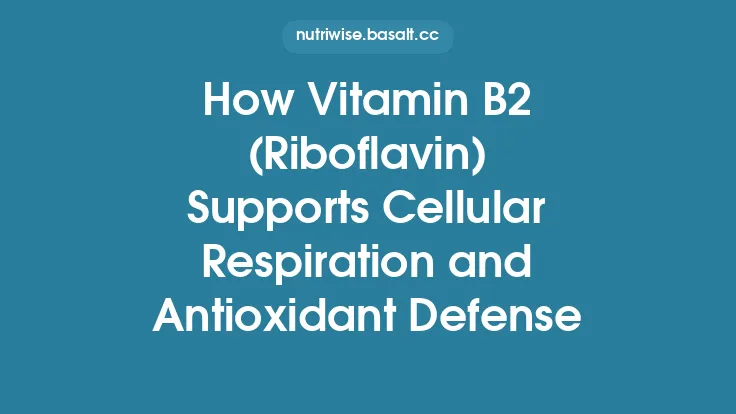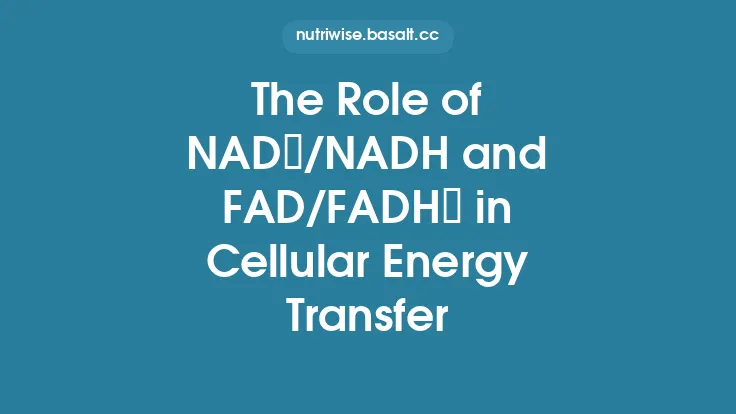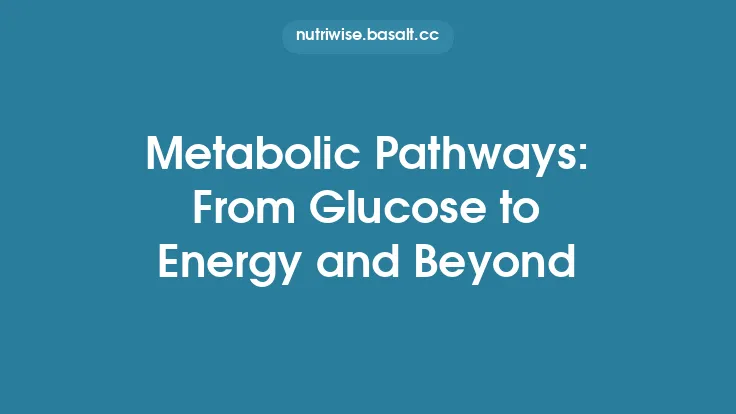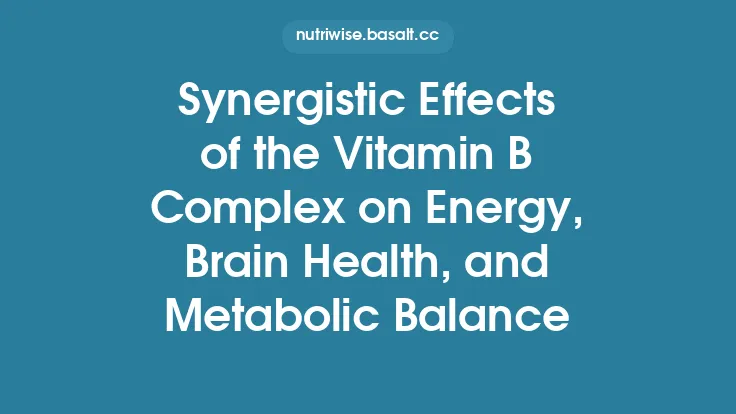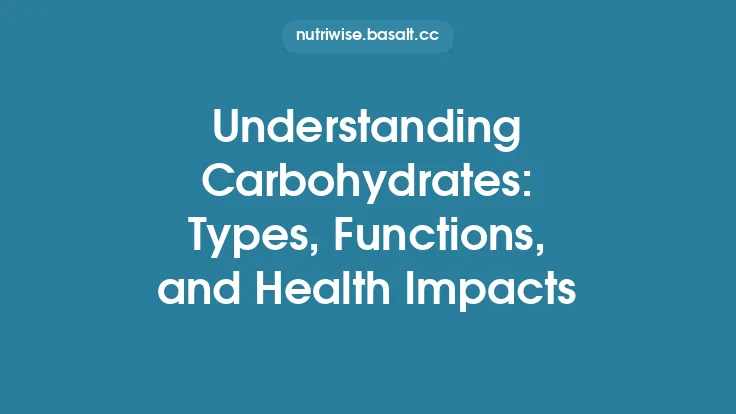The pentose phosphate pathway (PPP) is a versatile metabolic route that branches off from glycolysis at the level of glucose‑6‑phosphate (G6P). While glycolysis primarily funnels carbon skeletons toward ATP production, the PPP diverts a portion of the carbohydrate flux to generate two essential cellular commodities: reducing power in the form of NADPH and ribose‑5‑phosphate (R5P), the sugar backbone for nucleotide synthesis. Because the pathway is tightly linked to the handling of dietary carbohydrates, it belongs squarely within the family of metabolic pathways that process digested nutrients, yet its functions extend far beyond simple energy provision.
Entry of Dietary Glucose into the Pentose Phosphate Pathway
After a carbohydrate‑rich meal, polysaccharides are broken down to glucose, which is absorbed into the bloodstream and taken up by cells via GLUT transporters. Inside the cytosol, hexokinase (or glucokinase in hepatocytes) phosphorylates glucose to G6P. The fate of G6P is at a metabolic crossroads: it can continue through glycolysis, be stored as glycogen, or be shunted into the PPP. The decision is governed largely by the cellular demand for NADPH and ribose sugars.
Key points of entry:
- Glucose‑6‑phosphate dehydrogenase (G6PD) catalyzes the first, rate‑limiting step of the oxidative branch, converting G6P into 6‑phosphoglucono‑δ‑lactone while reducing NADP⁺ to NADPH.
- The enzyme exhibits a high Km for G6P, meaning that only when intracellular G6P concentrations rise (as after a carbohydrate load) does the PPP become appreciably active.
Thus, the PPP acts as a “safety valve” for excess glucose, ensuring that surplus carbohydrate does not accumulate as harmful intermediates and that the cell’s biosynthetic and redox needs are met.
The Oxidative Branch: Production of NADPH and Carbon Dioxide
The oxidative arm consists of three sequential reactions:
- G6PD – G6P + NADP⁺ → 6‑phosphoglucono‑δ‑lactone + NADPH + H⁺
- 6‑Phosphogluconolactonase – Hydrolyzes the lactone to 6‑phosphogluconate.
- 6‑Phosphogluconate dehydrogenase (6PGD) – Oxidative decarboxylation of 6‑phosphogluconate to ribulose‑5‑phosphate (Ru5P), producing a second molecule of NADPH and releasing CO₂.
The net stoichiometry for the oxidative branch is:
> Glucose‑6‑P + 2 NADP⁺ + H₂O → Ribulose‑5‑P + 2 NADPH + CO₂ + 2 H⁺
Two molecules of NADPH per glucose are generated, providing a robust source of reducing equivalents for a variety of cytosolic reactions.
The Non‑Oxidative Branch: Interconversion of Sugar Phosphates
Ribulose‑5‑P can be isomerized to ribose‑5‑P (R5P) by ribose‑5‑phosphate isomerase. R5P is the direct precursor for the synthesis of nucleotides and nucleic acids. However, the PPP also needs to balance carbon flow when the demand for ribose is low or when glycolytic intermediates are required. This is achieved through a series of reversible transketolase and transaldolase reactions that shuffle carbon atoms among sugar phosphates:
- Transketolase (requires thiamine pyrophosphate, TPP) transfers a two‑carbon fragment from a donor ketose (e.g., xylulose‑5‑P) to an acceptor aldose (e.g., ribose‑5‑P), producing glyceraldehyde‑3‑P (G3P) and sedoheptulose‑7‑P.
- Transaldolase moves a three‑carbon unit from sedoheptulose‑7‑P to G3P, yielding erythrose‑4‑P and fructose‑6‑P.
Through successive rounds, the non‑oxidative branch can generate fructose‑6‑P and glyceraldehyde‑3‑P, which re‑enter glycolysis, or it can produce ribose‑5‑P for nucleotide biosynthesis. This flexibility allows the cell to adapt to varying metabolic demands without wasteful loss of carbon.
NADPH: The Central Reducing Agent for Antioxidant Defense
Glutathione System
The most prominent antioxidant system that relies on NADPH is the glutathione (GSH) cycle. In its reduced form, GSH donates electrons to reactive oxygen species (ROS) such as hydrogen peroxide (H₂O₂) via glutathione peroxidase, converting H₂O₂ to water while oxidizing GSH to glutathione disulfide (GSSG). To recycle GSSG back to GSH, the enzyme glutathione reductase uses NADPH as the electron donor:
> GSSG + NADPH + H⁺ → 2 GSH + NADP⁺
Thus, the PPP directly sustains the cellular pool of reduced glutathione, a critical line of defense against oxidative stress generated during digestion (e.g., from the metabolism of dietary fats and xenobiotics).
Thioredoxin System
Another NADPH‑dependent antioxidant pathway involves thioredoxin reductase, which reduces oxidized thioredoxin (Trx‑S₂) back to its active dithiol form (Trx‑(SH)₂). Reduced thioredoxin then participates in the repair of oxidized proteins, DNA, and lipids.
Lipid Biosynthesis and Detoxification
NADPH is also required for the synthesis of fatty acids, cholesterol, and for the activity of cytochrome P450 enzymes that detoxify dietary xenobiotics. While these processes are not the primary focus of the PPP article, they illustrate the broader importance of NADPH beyond antioxidant defense.
Ribose‑5‑Phosphate and Nucleotide Biosynthesis
R5P generated by the PPP is phosphorylated by phosphoribosyl pyrophosphate synthetase (PRPS) to form phosphoribosyl pyrophosphate (PRPP), a high‑energy donor used in the de novo synthesis of purine and pyrimidine nucleotides.
- Purine pathway – PRPP condenses with glutamine to initiate the formation of inosine monophosphate (IMP), the precursor for adenine and guanine nucleotides.
- Pyrimidine pathway – PRPP reacts with orotate (derived from carbamoyl phosphate and aspartate) to generate orotidine‑5′‑monophosphate (OMP), which is then decarboxylated to uridine‑5′‑monophosphate (UMP).
Because rapidly proliferating cells (e.g., immune cells, intestinal epithelium, and tumor cells) have heightened nucleotide demands, the PPP is often up‑regulated in these contexts to supply sufficient R5P and NADPH.
Regulation of the Pentose Phosphate Pathway
The PPP is primarily controlled at the level of its first enzyme, G6PD, through several mechanisms that reflect the cell’s redox and biosynthetic status:
- Allosteric activation by NADP⁺ – An increase in the NADP⁺/NADPH ratio signals a need for more reducing power, stimulating G6PD activity.
- Inhibition by NADPH – High NADPH concentrations feed back to suppress G6PD, preventing unnecessary NADPH overproduction.
- Post‑translational modifications – Phosphorylation of G6PD by protein kinase A (PKA) can enhance its activity in response to hormonal cues such as glucagon, which rises during fasting when the liver must generate NADPH for gluconeogenesis and lipid synthesis.
- Substrate availability – Elevated intracellular G6P, as occurs after a carbohydrate‑rich meal, drives flux through the PPP.
Transketolase and transaldolase are also regulated by the availability of their thiamine‑derived cofactor (TPP) and by the concentrations of their sugar‑phosphate substrates, ensuring that the non‑oxidative branch can adapt to the relative needs for ribose versus glycolytic intermediates.
Clinical Relevance
G6PD Deficiency
One of the most common enzymatic deficiencies worldwide is G6PD deficiency, an X‑linked disorder affecting roughly 400 million people. Reduced G6PD activity compromises NADPH generation, rendering red blood cells vulnerable to oxidative damage. Ingestion of certain foods (e.g., fava beans) or drugs (e.g., primaquine) can precipitate hemolytic crises in affected individuals, underscoring the PPP’s role in protecting cells from dietary oxidative stress.
Cancer Metabolism
Many tumors exhibit a “PPP shunt” whereby oncogenic signaling (e.g., via KRAS, MYC) up‑regulates G6PD and transketolase, providing NADPH for biosynthesis and ROS detoxification, and supplying ribose for rapid DNA replication. Targeting PPP enzymes is an active area of therapeutic research, with inhibitors such as dehydroepiandrosterone (a transketolase antagonist) being explored in preclinical models.
Metabolic Disorders
In diabetes, chronic hyperglycemia can increase flux through the PPP, contributing to the formation of advanced glycation end‑products (AGEs) and oxidative stress in vascular tissues. Understanding PPP dynamics helps explain some of the microvascular complications associated with prolonged high glucose exposure.
Dietary Influences and Nutritional Modulation
Because the PPP depends on carbohydrate intake and specific micronutrients, diet can modulate its activity:
- Carbohydrate load – High‑glycemic meals raise intracellular G6P, promoting PPP flux. Low‑carbohydrate diets, conversely, limit substrate availability.
- B‑vitamins – Thiamine (B1) is essential for transketolase; riboflavin (B2) is a precursor of flavin adenine dinucleotide (FAD), a cofactor for 6PGD. Adequate intake of these vitamins supports optimal PPP function.
- Magnesium – Required for the activity of G6PD and PRPS; magnesium deficiency can blunt NADPH production and nucleotide synthesis.
- Polyphenols and flavonoids – Certain plant compounds (e.g., quercetin) have been shown to up‑regulate G6PD expression, potentially enhancing antioxidant capacity.
Thus, a balanced diet that supplies sufficient glucose, B‑vitamins, and minerals can help maintain a robust PPP, contributing to cellular resilience against oxidative challenges and supporting tissue growth and repair.
Experimental Approaches to Study the PPP
Researchers employ several techniques to quantify PPP activity and its contribution to cellular metabolism:
- Isotopic tracer studies – Using ^13C‑labeled glucose, the distribution of label into ribose versus glycolytic intermediates can be measured by mass spectrometry, revealing the proportion of glucose routed through the PPP.
- Enzyme activity assays – Spectrophotometric measurement of NADPH production in cell lysates provides a direct readout of G6PD activity.
- Genetic manipulation – CRISPR/Cas9‑mediated knockout or overexpression of G6PD, transketolase, or transaldolase allows functional dissection of the pathway’s role in specific cell types.
- Redox imaging – Fluorescent probes for NADPH/NADP⁺ ratios enable real‑time visualization of PPP‑derived reducing power in living cells.
These tools have deepened our understanding of how dietary inputs shape PPP flux and how the pathway integrates with broader metabolic networks.
Integrative Perspective: The PPP in the Context of Digested Nutrients
When a meal is consumed, the digestive system breaks down carbohydrates into monosaccharides that are absorbed and phosphorylated to G6P. The PPP then acts as a metabolic “branch office” that diverts a portion of this carbon skeleton away from glycolysis to fulfill two critical cellular missions:
- Provision of NADPH – safeguarding macromolecules from oxidative damage generated during the metabolic processing of nutrients.
- Supply of ribose‑5‑phosphate – furnishing the building blocks for nucleic acid synthesis, which is essential for cell proliferation, repair, and immune function.
Because the pathway is cytosolic, it operates independently of mitochondrial oxidative phosphorylation, allowing the cell to generate reducing power even under conditions where mitochondrial respiration is limited (e.g., hypoxia, early post‑prandial state). The PPP therefore represents a key interface between the nutritional landscape of the diet and the biochemical needs of the cell.
Concluding Remarks
The pentose phosphate pathway exemplifies how the body transforms a simple dietary carbohydrate into a suite of molecules that protect against oxidative stress and enable the synthesis of nucleic acids. Its dual branches—oxidative and non‑oxidative—provide a flexible framework that can be tuned according to the cell’s redox status, biosynthetic demand, and substrate availability.
Understanding the PPP’s regulation, its clinical implications, and the ways in which diet can influence its activity equips nutrition scientists, clinicians, and food technologists with valuable insight into how everyday meals impact cellular health at a molecular level. By appreciating the PPP’s central role in antioxidant defense and nucleotide synthesis, we gain a clearer picture of the intricate choreography that underlies the metabolism of digested nutrients.
